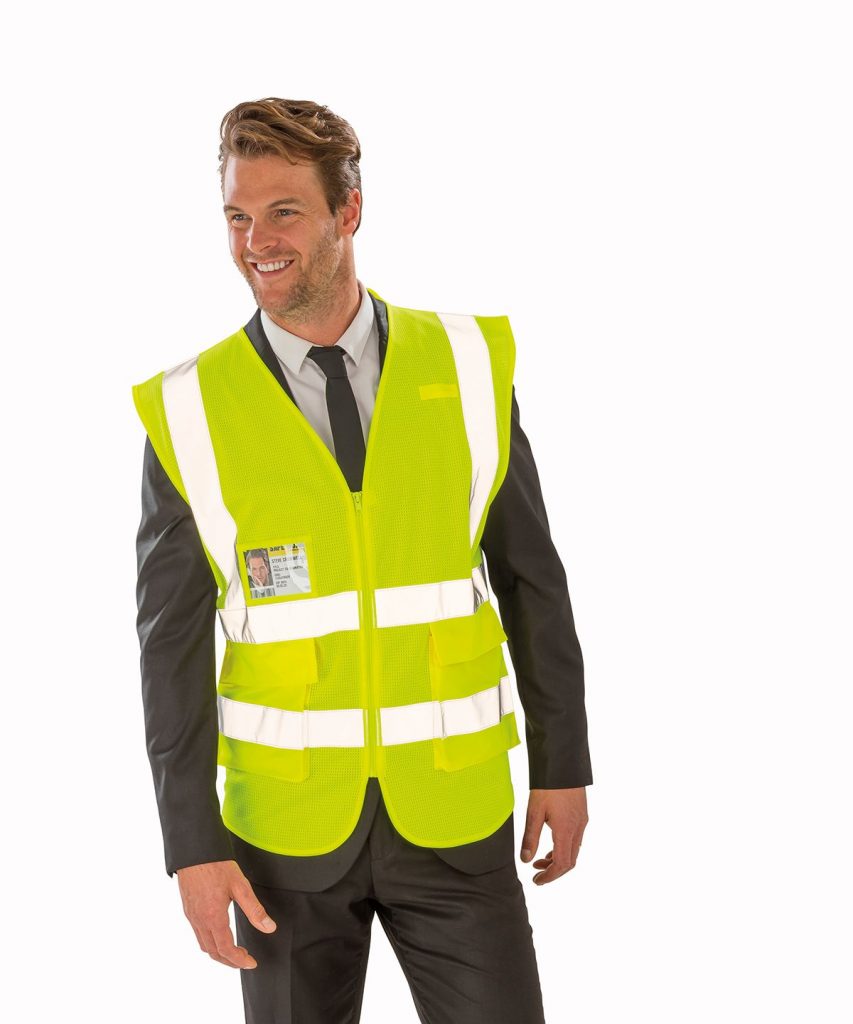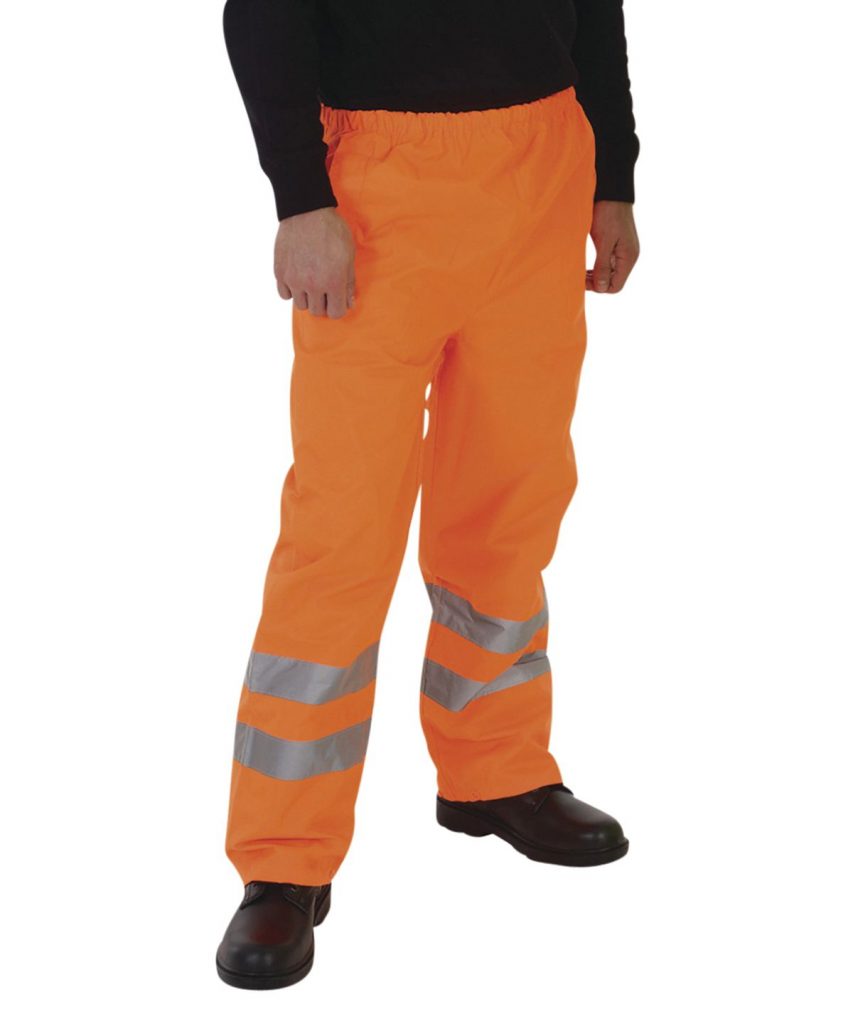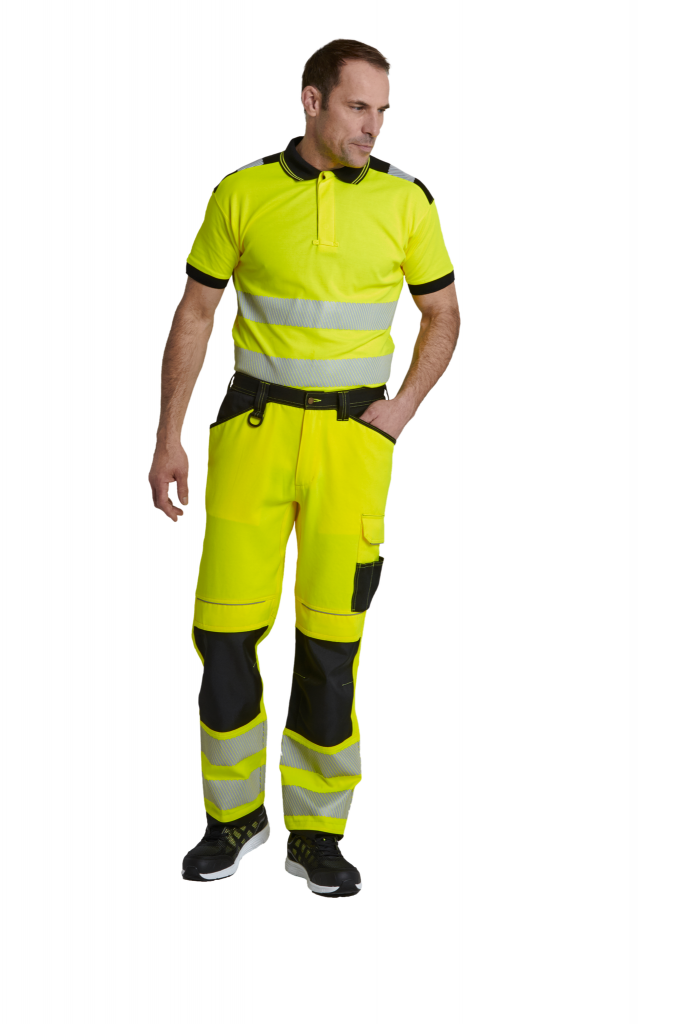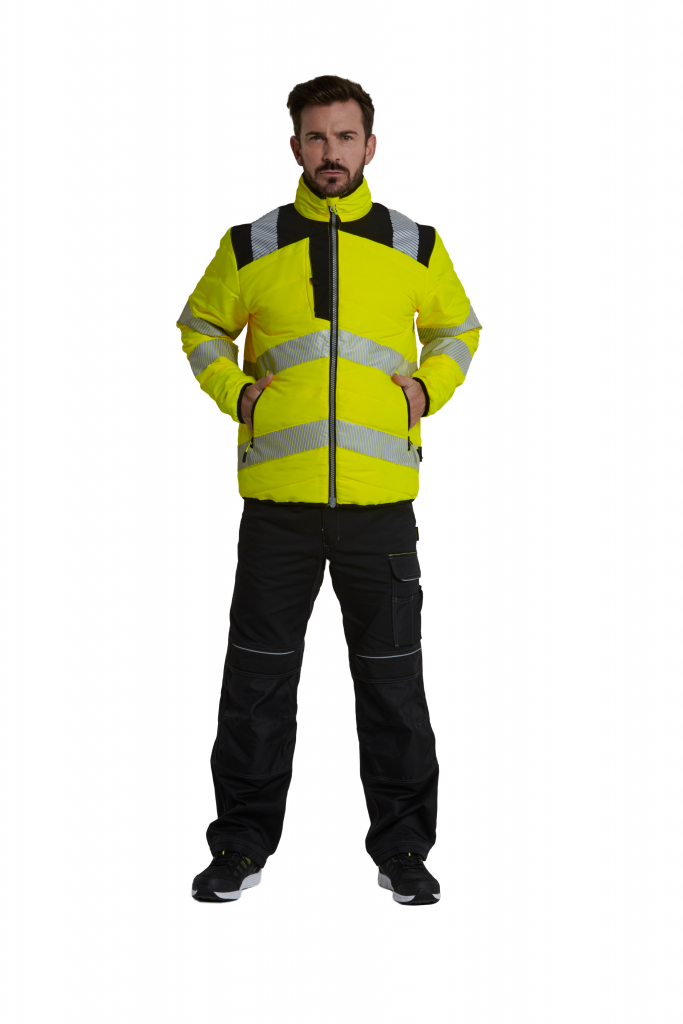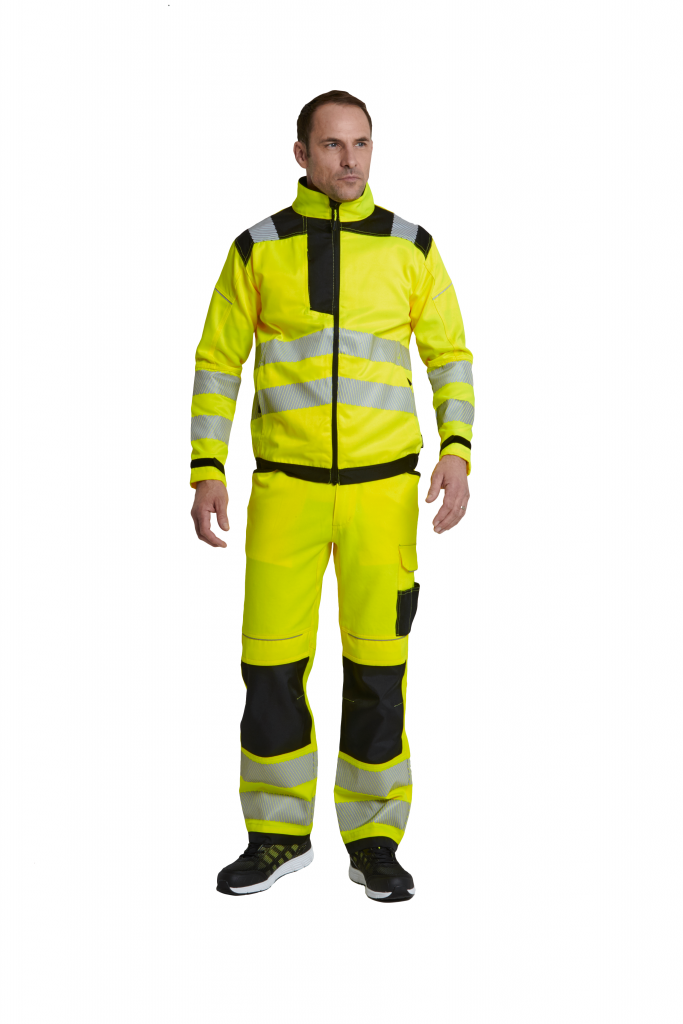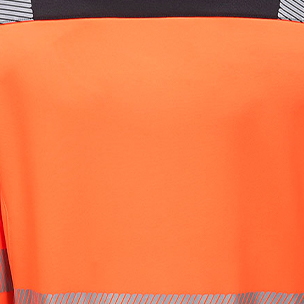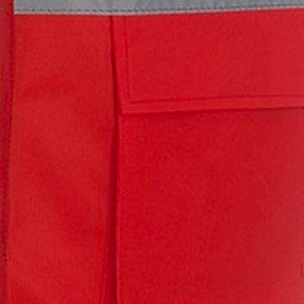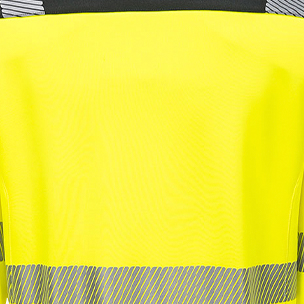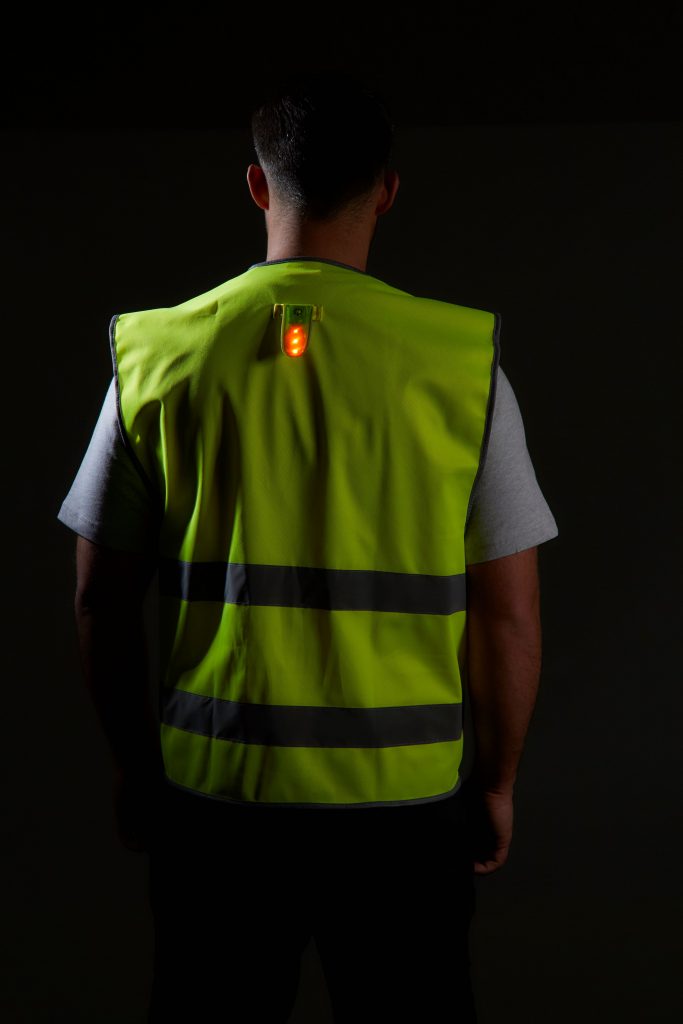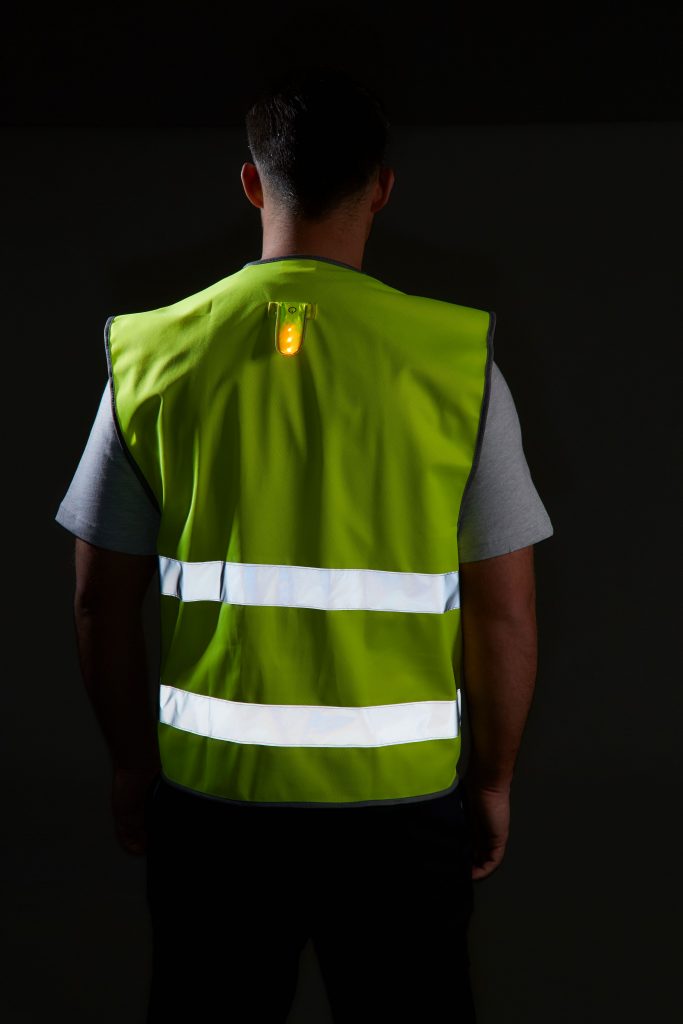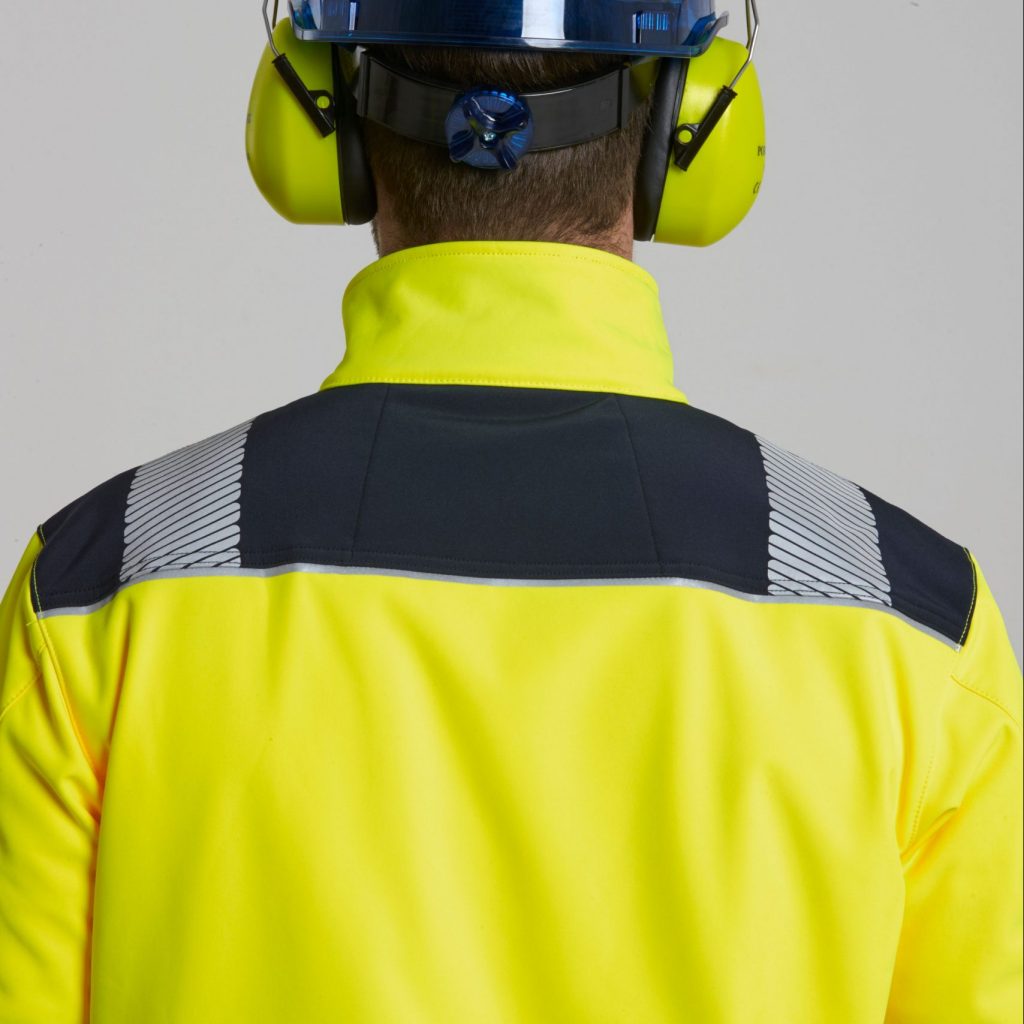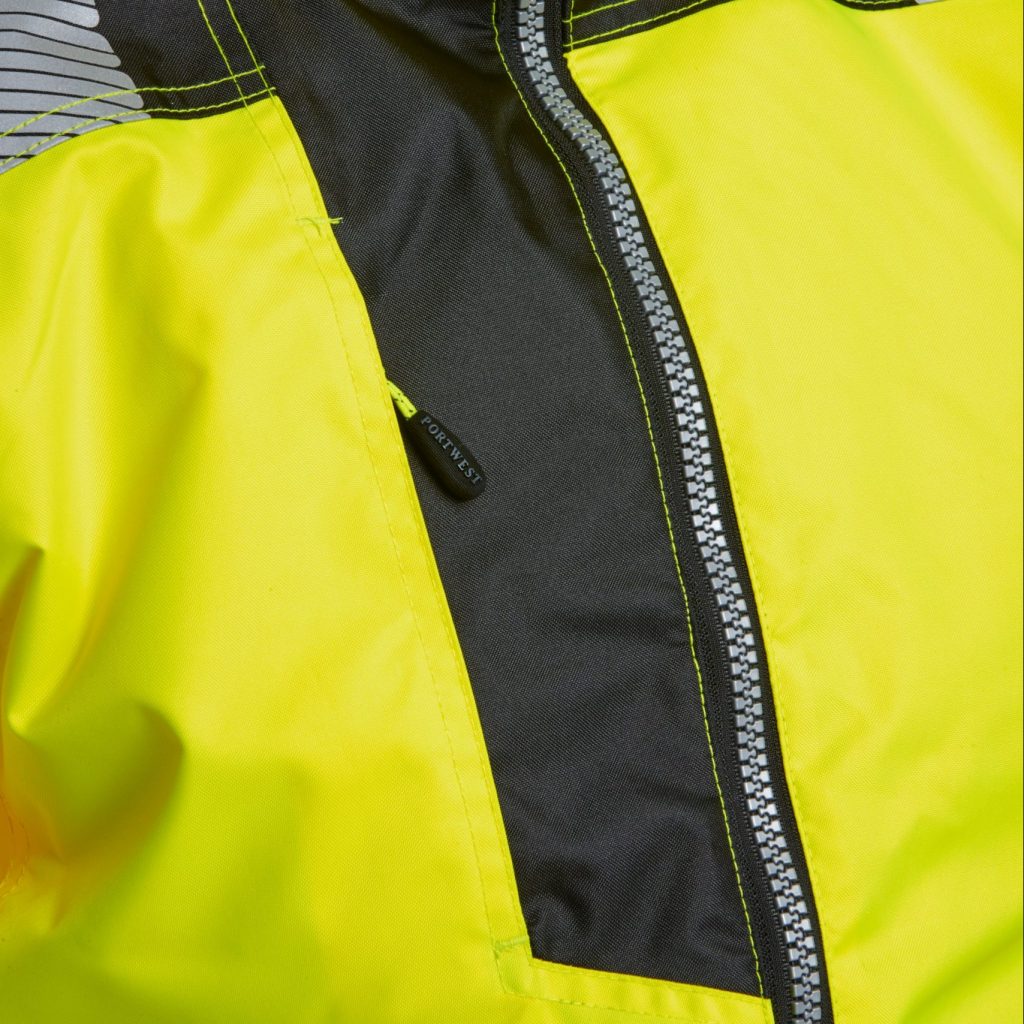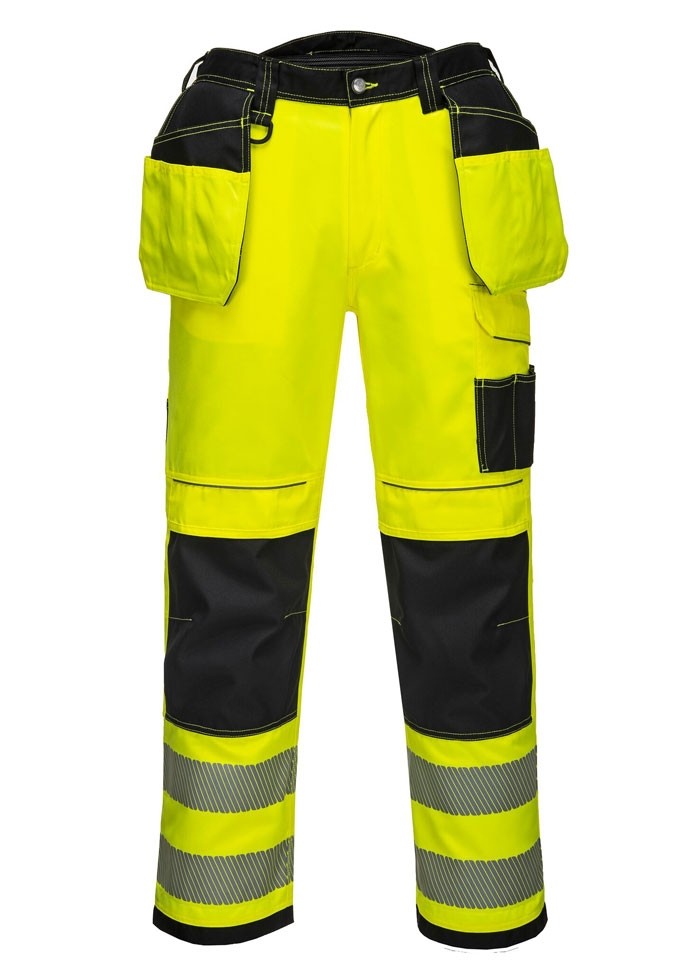Hi Vis Standards - EN ISO 20471 Explained
Hi Vis clothing is essential for keeping workers safe when working near traffic, cranes, forklifts or other vehicles. It is absolutely needed when working at night or in low-light conditions. Hi vis comes in many different clothing options: vests, fleeces, coveralls & overalls, t shirts, polos, hoodies - in fact all types of workwear garment will likely have a high visibility equivalent.
The primary role of hi vis clothing is to separate wearers from whatever background environment they are working in, quickly and at a distance and from all angles. This lowers the risk of accidents happening as everyone can see each other on site.
Being such a vital safety element at work, it's important that hi vis garments are somewhat standardised, controlled by legislation and certified as such. The current legislated standard certification is: EN ISO 20471.
- Page Contents
- The Definition of High Visibility Clothing
- What is EN ISO 20471?
- What Are The Requirements?
- What is Different in the New Specification?
- The Performance of Fabrics
- The Components of Hi Vis
- Hi Vis Classes
- How Branding Affects Standards
- Maintaining Compliance
- Replacing
How is Hi Vis Clothing Defined?
The EN ISO 20471 specifications define high visibility clothing as:
Warning clothing intended to provide improved conspicuity in situations where the risk of not being seen is high
- ISO

As you can see, hi vis clothing is considered a "warning" that workers wear to signal their presence in situations of risk. As such, it is absolutely right that it is taken seriously.
Anyone needing to wear a warning, or in charge of people who need to wear a warning, should know their way around the high visibility standards and classes related to the nuances of their particular job situation.
There are different classes of hi vis that are required in different job settings, but we'll get to that later on in this guide.
What is EN ISO 20471 Hi Vis Certification?
EN ISO 20471:2013 for High Visibility Clothing was released in 2013. The new standard replaced EN 471:2003 A1:2007 as the international standards for safety testing methods of hi vis workwear to be used in high-risk working environments.
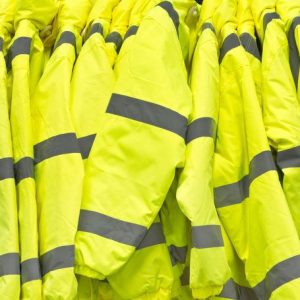
The specifications require that 'high visibility clothing ... is capable of visually signalling the user's presence' and describes tests in order to appraise retro-reflective materials in terms of durability and effectiveness.
Certificates for the previous hi vis clothing standard last only for 5 years, so by now any hi vis garments made to the old EN471 certification have already lost compliance. New Hi Vis workwear made now must be CE marked and designed to comply with the EN ISO 20471:2013.
What hasn't changed is the categorisation of retro-reflective and background materials. These are still categorised into 3 classes depending on the combined performance of those fabrics and reflective tapes. There are some differences, but we'll cover them shortly.
What are the Requirements of EN ISO 20471?
The standard covers the flourescent fabric colour, minimum areas of reflective strips and even the placement of tape. These standards attempt to set a minimum area on view of the wearer from all sides when the garment is worn.
That's right - compliance is not about the garment at all, it's about the wearer. This is an important distinction. A pair of hi vis trousers can only comply if they are worn correctly. Shortening them, tucking them into your boots or not keeping them clean may reduce the surface area of fluorescence on display. Of course a pair of hi vis overalls are going to completely cover the body in high visibility material.
Would you put a non-hi vis jacket on OVER a high visibility vest? Of course not.
And you shouldn't wear it open either. A vest is only compliant if it is worn correctly, that means closed. Remember that minimum view from all side of the wearer? An open hi vis vest will tuck under the arms leaving nothing but a small stripe from the front view.
Keep them closed.
How is EN ISO 20471 Different from EN471?
Several improvements were made to the hi vis standards when EN ISO 20471 replaced EN471 in 2013. The new standard makes a stronger distinction between the different types of risk situations, which Hi Vis users can then apply to their own situation to determine the level of protection they require.
Now the onus is on the wearer to be remain compliant rather than just on the clothing as it was in EN471, so different sections of the body have been defined to make it simpler to understand. The defined body sections are:
- Torso only - eg: vest, gilet, polo shirt or t-shirt
- Torso and Arms - eg: long sleeved t-shirt or polo, long sleeved jacket or coat
- Legs - eg: long legged over-trousers, full length trousers
- Torso and Legs - long-legged trousers with a t-shirt
- Torso, Arms and Legs - eg: trousers with a long sleeved jacket or polo
There were already 3 different classes of hi vis, but class 3 has newer, stricter requirements.
For class 3 compliance, hi vis fluorescent fabric must cover either Torso and Arms or Torso and Legs with reflective bands on permanent display. If a sleeve of a hi vis garment obscures the reflective band at any time, then the sleeve must have a reflective band also.
The colour fastness of the fluorescent fabric was upgraded and is now a minimum of grade 4. However, the tensile, burst and tear strength requirements have been lowered, supposedly to reduce snagging risks.
The Performance of Fabric Components
The performance of the materials in terms of dimensional stability, thermal resistance and tensile strength is also covered in the hi vis standards. This ensures that any standardised garment that reaches the market is suitable for working conditions where there is high risk.
Similarly with the reflective tapes. Tape must be up to the job and stay compliant without failing in normal working use.
Contrast materials must not bleed their colour onto the hi vis fabric and stain it, reducing it's efficacy. There are maximum values allowed within the standard's testing procedures. Any bleeding of dark fabric dye can affect the hi vis fluorescence so a low level of tolerance is set within EN ISO 20471.
What are the Components of Hi Vis clothing?
The EN ISO 20471 standard encompasses all aspects of the design of hi vis clothing. That includes what elements it must have, the colours they can be and especially the efficacy or performance. There are usually 3 main components, they are:
Fluorescent Fabric
The official definition is:
Material that emits electromagnetic radiation at visible wavelengths longer than those absorbed
- ISO
Thats way more science than the average bear needs to know, so we'll make it simple.
Fluorescent fabrics are designed to boost the wearer's visibility in daylight but can also help to increase night time visibility too. They do not blend in with (most) surroundings and catch the eye quickly to act as the "warning" mentioned earlier.
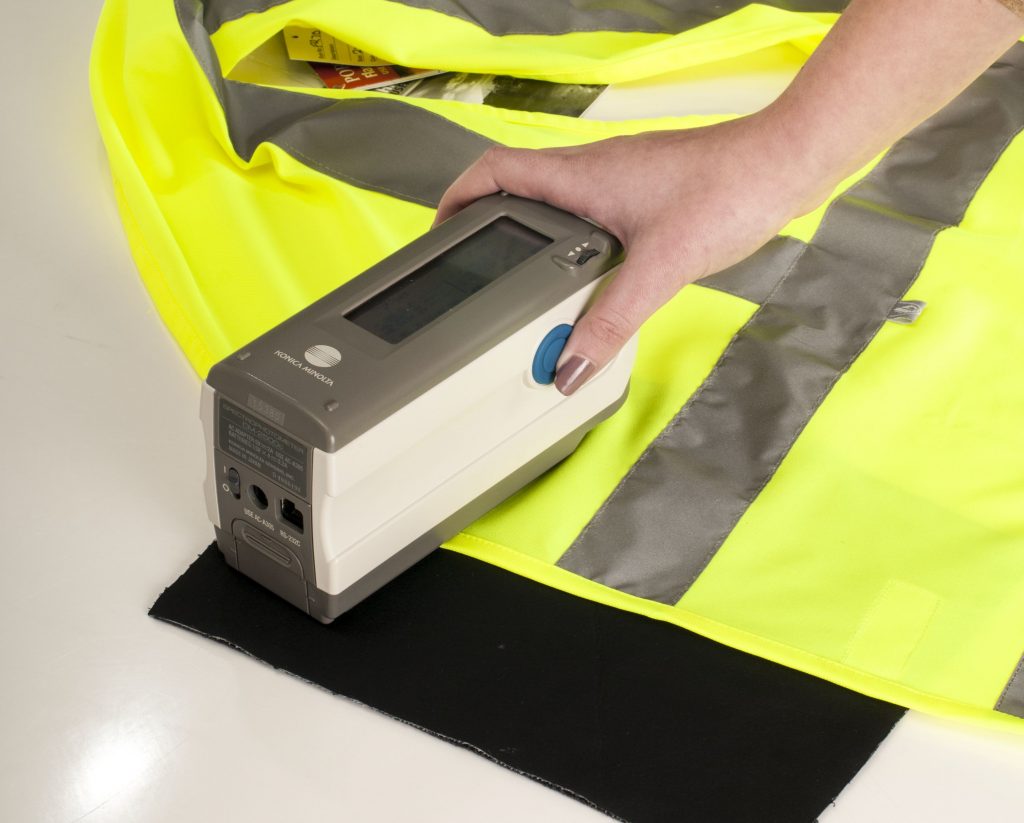
The colours have meaning within the standard and there is very little difference between like colours between different hi vis garments. That is to say, the colours are standardised, rather than a Yellow fabric means one thing and an Orange fabric means another.
There are 3 colours approved in the standard. These are: Yellow, Orange and Red. Any other colour vest is non-compliant and isn't technically hi vis.
Reflective Strips
The official definition:
Material which is a retroreflector but which is not intended to comply with the requirements of this International Standard for background material
- ISO
Retro-reflection reflects light back towards the source of the light. So a retro-reflector is a material that performs that function.
Reflective strips (or tape as it's also known) need a light source to create retro-reflection. The most common type of retro-reflective strip uses glass beads to reflect light back towards the light source. These need to be looked after and have a limited lifespan with a limited number of washes before they need to be replaced. More on that later.
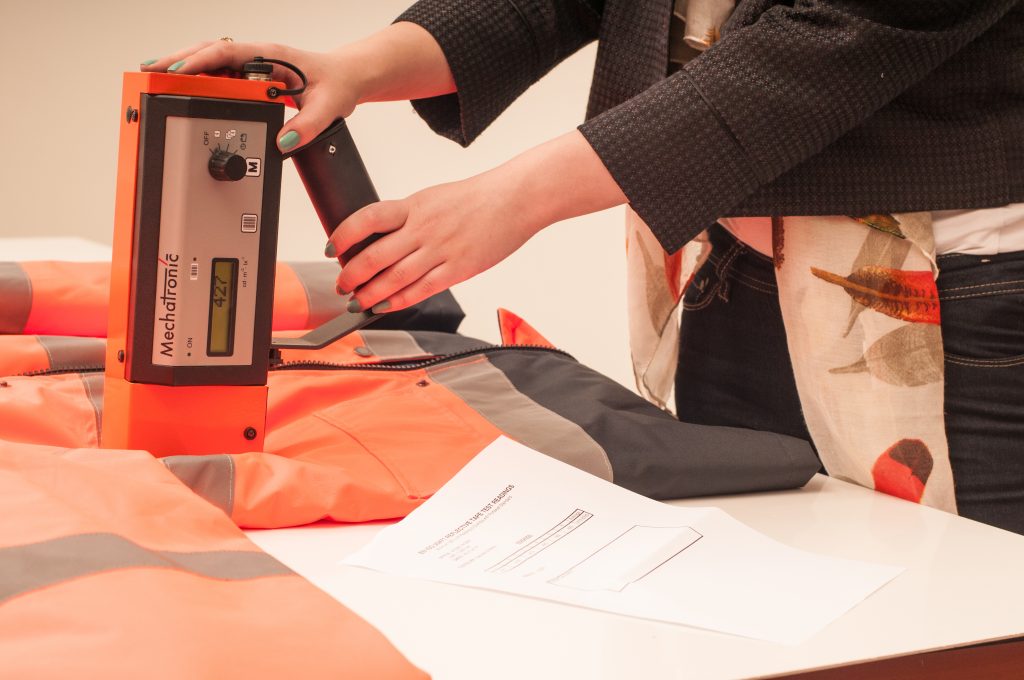
There are also sizing standards and overall surface area of reflection to consider (See Table Below).
Contrast Materials
Many hi vis manufacturers add contrast colours to their ranges made of fabric that is less sensitive to the build up of dirt. When fluorescent fabrics and reflective tapes get dirty, the muck spreads though the fibres and renders the garment non-compliant.
Contrast fabric tends to be added where muck is most likely to build: Knees, ankles, pockets, sleeve ends, shoulders etc. Portwest do a great job of balancing hi vis with contrast in their PW3 range.
By adding contrast fabrics to at strategic points of the garment, dirt tends not to spread onto the fluorescent fabric. This keeps the wearer compliant for much longer on the job. It also reduces the need for washing the garment, which as we mentioned above, limits its functional lifetime.
What Are the Classes of Hi Vis?
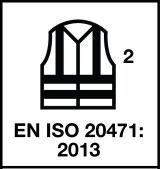
The class that a garment falls into can be found on the label of any EN ISO 20471 compliant garment. The label should contain the EN ISO 20471 icon and the relevant class number. The example below shows Class 2:
Which class of hi vis you need for your specific working conditions is beyond the scope of this guide, but the best place to start is with a thorough risk assessment of the working conditions of your employees. the class will depend on the risks the particular worker faces, which will determine the amount of colour and reflective material that needs to be displayed.
The EN ISO 20471 certification determines the amount of both reflective and coloured material and sets the minimum requirements.
Certification is based on the surface area of both types of material, and sets out minimum requirements for each:
| Class 1 | Class 2 | Class 3 | |
| Reflective Material | 0.10 m2 | 0.13 m2 | 0.20 m2 |
| Fluorescent Material | 0.14 m2 | 0.50 m2 | 0.80 m2 |
Hi Vis Class 1
This offers the lowest level of visibility of the wearer and usually involves single garments worn individually. For instance, a pair of hi vis trousers worn without a vest or top would only comply with Class 1 high visibility under the EN ISO 20471 standard. Wearing the same trousers with other hi vis garments would likely change the class.
Find Class 1 Hi Vis Clothing Here
Hi Vis Class 2
This offers an intermediate level of visibility of the wearer. Wearing just a standard sleeveless hi vis vest could comply with Class 2 even though it's a single garment due to the height it would be worn at.
Find Class 2 Hi Vis Clothing Here
Hi Vis Class 3
This is the highest level of visibility and can be made up of different garments or be a single garment. A hi vis jacket with sleeves would likely comply with Class 3, similarly a pair of hi vis trouser worn with a hi vis polo shirt could meet class 3 if they are jointly certified.
Products that are jointly certified will be labelled as such.
For all 3 classes, it is the total area of fluorescent material and reflective stripe that is on the wearer that determines the class that the wearer is complying with. Be mindful of taking that jacket off when it gets too warm.
How Does Custom Branding Affect Hi Vis?
Branding your clothing as a work uniform is a highly beneficial way of promoting your company on site and distinguishing employees from other firms. However, employers should show restraint when adding printed logos to hi vis workwear.
Logos cover the fluorescent background material, so the area of the logo is deducted from the minimum surface area calculation. This is something you should discuss with your supplier to ensure you're not giving your employees non-compliant safety wear.
Adding logos to a contrast area would be less likely to reduce performance, but that is rarely possible.
Maintaining Compliance with EN ISO 20471
EN ISO 20471 does a great job of detailing the test methods and standards for manufacturers to manufacture highly compliant hi vis clothing solutions. And it sets high standards for suppliers to supply to you, the customer and wearer.
Once it has been worn it is up to the wearer or their employer to maintain the standards by wearing it properly and keeping it clean.

Contained within the packaging of your brand new highly compliant hi vis workwear, you should find a set of care instructions.
You should definitely follow the instructions
Even then you have a limited number of washes in its lifecycle. On average, hi vis clothing has a maximum wash lifecycle of 25 washes before the glass beads lose their effectiveness and the fluorescent fabric loses colour. This leads to non-compliance.
Over-washed hi vis isn't very high visibility either. Remember it serves as a warning to others that you are there. Warning's aren't meant to be whispered.
It may be Yellow (or Orange or Red), but its not Yellow (or Orange or Red) enough. You can't see it from distance and it's more difficult to pick it out against a background. At night, it might have reflective bands, but they're not reflective enough and need light from a much closer source to reflect back. That may be too close for a driver to react quickly enough. Over-washed hi vis increases the risk of accident massively
But so does dirty hi vis, for the same reasons, so it still has to be cleaned.
When Should I Replace My Hi Vis?
Simple answer: When it no longer complies.
You have to replace your high visibility clothing when it no longer gives a warning to your presence.
If the average grafter washes their hi vis workwear once a week, that's less than 6 months of lifetime.
It's best to have at least 2 of every Hi Vis garment you need for each of the defined body sections for the class for your particular risks. Rotating their use can prolong their lifetime as they would need to be washed less often. With this method, you should still aim to replace Hi Vis garments at least every 8-12 months.
If your Hi Vis is no longer capable of performing to its certified class, the time to replace it is now.
Why Choose XAMAX® for EN ISO 20471 Compliant Clothing?
XAMAX® specialise in providing EN ISO 20471 compliant hi vis clothing to keep your workforce safe and visible in high-risk environments. As a BSIF Registered Supplier, we ensure all our products meet the highest UK safety standards. Whether you need hi vis jackets, vests, or trousers, we have you covered. Visit the XAMAX® homepage to explore our full range of workwear.







